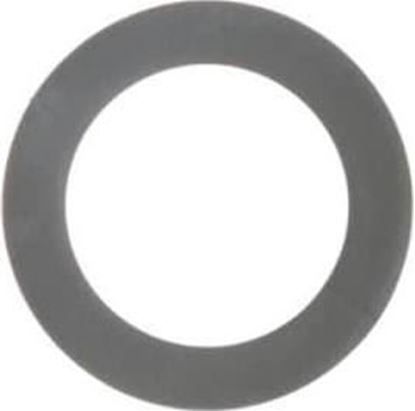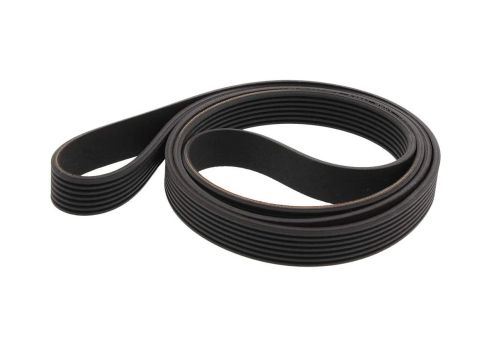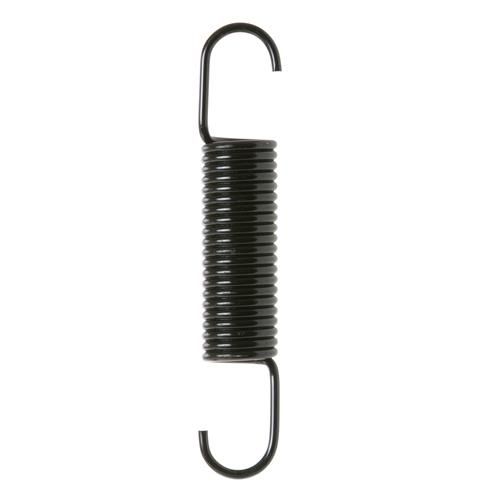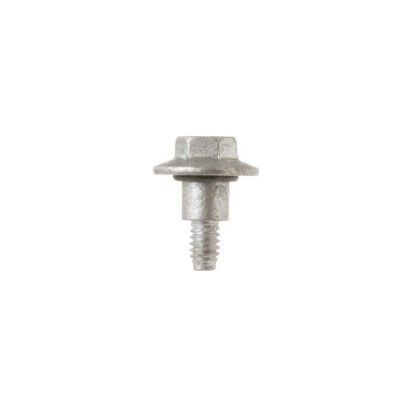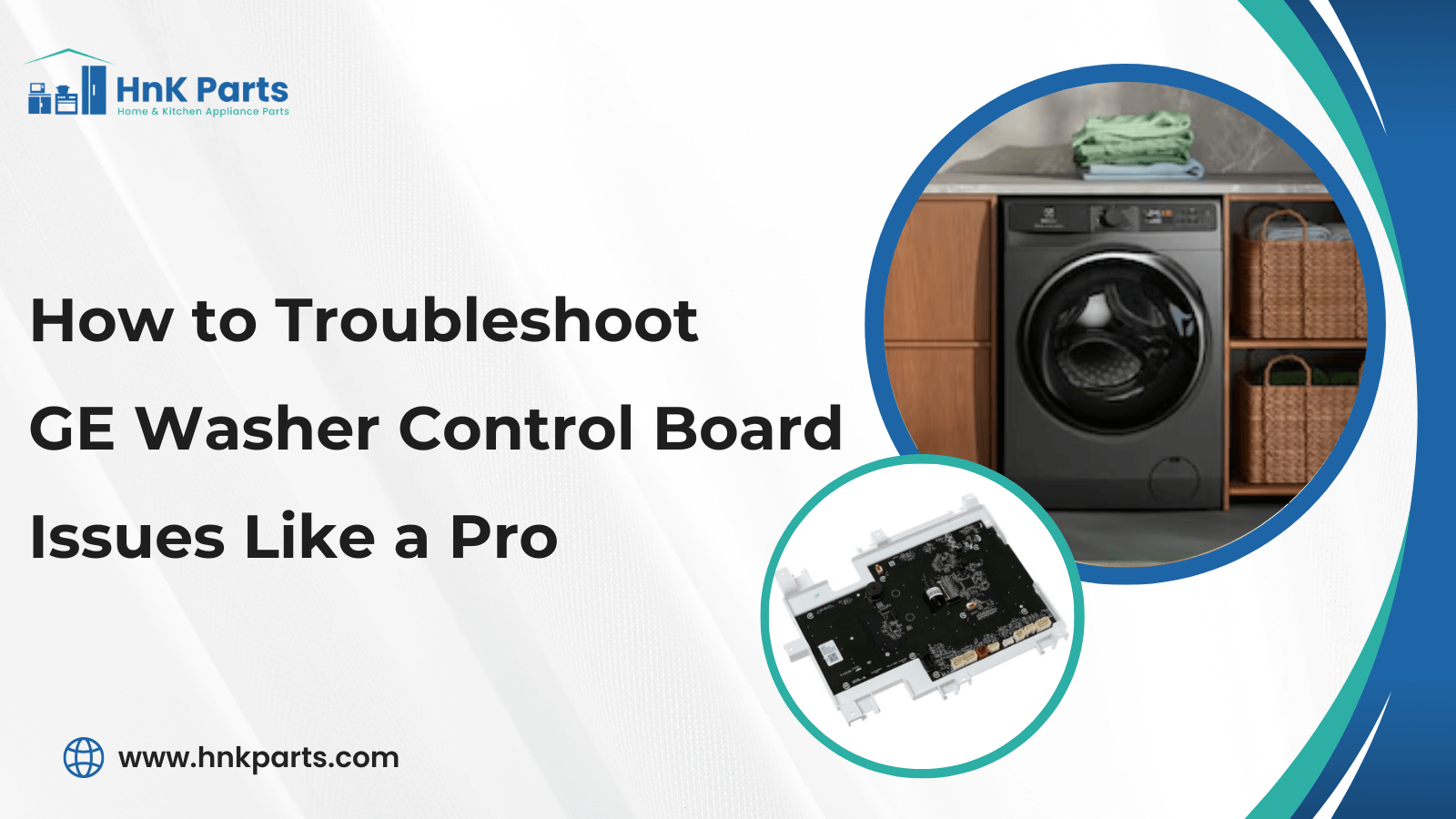
How to Troubleshoot GE Washer Control Board Issues Like a Pro
The control board is the main part of the GE washing machine, overseeing cycle selection, water level sensing, spin speed, and safety interlocks. When it malfunctions, even routine laundry cycles halt unexpectedly, buttons don’t respond, or error codes flash without warning. Ignoring early signs can lead to costly repairs or complete breakdowns. This guide arms you with professional-grade troubleshooting tactics, from pinpointing fault codes to performing a full GE washer control board reset. Whether you’re a seasoned DIYer or a homeowner eager to save on repair bills, you’ll learn how to diagnose common issues, decide when replacement is necessary, and adopt preventive measures to prolong board life.
Understanding the GE Washer Control Board
Every element of a GE washer's functioning is coordinated by the control board:
-
Cycle management: Selects and advances wash stages—fill, agitate, rinse, spin.
-
Sensor interpretation: Reads signals from water level, temperature, and door-lock sensors.
-
Motor control: Regulates the drive motor for correct spin speed and direction.
-
User interface: Interprets button presses and dial settings, provides feedback via lights or error codes.
-
Safety protocols: Monitors lid lock, water overflow, and motor overload to prevent damage.
When functioning correctly, the board ensures each load is washed efficiently and safely.
Common Problems Linked to the Control Board
Control board issues often mimic other component failures, so it’s crucial to differentiate them:
-
Washer not starting or stops mid-cycle: The Board fails to send power to the motor or valves. Control board relay welds can stick, causing intermittent power delivery
-
Displaying GE washer fault codes: Common codes include F3E1 (water temperature sensor), F9E1 (motor), and F0E5 (communication error). Erratic codes or codes that clear and reappear often point to board instability rather than individual sensor failure
-
Irregular spin or draining issues: Spin speeds that fluctuate or won’t spin at all. The drain pump runs, but water doesn’t evacuate. The board may not be signaling the pump correctly
-
Unresponsive user interface: Buttons or knob inputs are ignored. LED indicators flicker without accepting new commands. While motor brushes, door locks, or pressure switches can trigger similar faults, persistent, multi-system anomalies usually trace back to the control board itself.
Step-by-Step Guide to GE Washer Troubleshooting
Follow this structured approach to isolate control board problems:
Verify power supply and wiring
-
Ensure the washer is on a dedicated 120 VAC, 15 A circuit.
-
Inspect the power cord and outlet for scorching or looseness
-
Measure incoming voltage with a multimeter; it should read 115–125 VAC.
Inspect error indicators
-
Note any fault codes or light patterns
-
Cross-reference codes with your model’s service manual or GE’s online resources.
Test key components
-
Use a continuity check on the lid lock assembly, and open the lock to prevent the cycle from starting.
-
Verify water inlet valve solenoid resistance (approx. 3–5 Ω)
-
Listen for unusual noise from the motor & pump, check for debris jam.
Perform a control board reset
-
Clears transient faults and reloads default firmware parameters
-
See the next section for detailed reset procedures
Run diagnostic mode
-
Turn the cycle selector knob to Service (varies by model)
-
Press Start/Pause to initiate each test, watch for motor, heater, valve, and sensor activations
Observe behavior post-reset
-
If errors vanish and normal operation resumes, suspect a transient glitch
-
Recurring or new faults indicate deeper board issues, proceed to replacement evaluation
How to Perform a GE Washer Control Board Reset
When a GE washer experiences intermittent errors, unexpected cycle interruptions, or communication faults, performing a control board reset can help. A reset clears corrupted data, reinitializes sensors, and restores timers to default. General Electric washer reset steps:
-
Unplug the washer: Disconnect power for at least 1 minute to fully discharge capacitors. Restore Power and Enter Reset Sequence. Plug the washer back in. Within 30 seconds, open and close the lid 6 times
-
Wait for test mode entry: Control panel lights will cycle or display “00” indicating diagnostic mode.
-
Exit test mode: Rotate the cycle selector knob one notch to the right. Press Start/Pause to confirm and reboot. Resetting GE Front-Load Washers
-
Touchpad models: With the washer powered on, press and hold Start/Pause for 6 seconds. All lights will flash; release the button. Cycle selector lights will display error codes. Press Start/Pause again to clear and restart.
-
Knob models: Turn the knob to rinse & spin. Unplug for 1 minute. Plug in and immediately turn the knob to Off. Wait 15 seconds; then select a few test cycles to verify.
Proper resets often restore normal function when glitches are purely software-based.
When to Opt for GE Washer Control Board Replacement
When the control board fails, the entire appliance may stop functioning correctly. Recognizing when replacement is necessary helps avoid unnecessary repairs and ensures reliable performance.
Warning signs beyond repair
-
Persistent, multiple fault codes across different systems
-
Physical damage like burnt components, bulging capacitors, and cracked solder joints
-
No improvement after reset and diagnostic tests
-
The board relays audibly, clicking or failing to engage
Choosing the right replacement part
-
Match the model number on the washer’s top panel or behind the kick plate
-
Verify that board revision firmware changes can affect compatibility
-
Consider genuine GE OEM parts for the longest lifespan and warranty
DIY vs professional service
-
DIY: Suitable if comfortable with safe disconnection of high-voltage wiring, component removal/reinstallation, or basic soldering (rare). Install time: ~30–60 minutes.
-
Professional: Recommended if warranty coverage remains, electrical experience is lacking, or board mounting is obstructed. Professionals ensure correct diagnosis and reduce risk.
Common Washing Machine Issues and How to Solve Them
Preventive Measures for Longer Control Board Life
To ensure longer life and reliable performance of your washing machine control board, following the preventive measures is essential.
|
Preventive Measure |
Details |
|
Install a surge protector |
|
|
Maintain proper ventilation |
|
|
Regular inspection |
|
|
Use recommended detergents |
|
|
Balance loads properly |
|
Troubleshooting a GE washer control board doesn’t have to be intimidating. By verifying power, interpreting fault codes, performing systematic resets, and running diagnostic tests, you can often revive a glitching washer in minutes. Extend board longevity through surge protection, regular cleanings, and proper loading habits. With these professional-grade tactics, you’ll spend less time waiting at the laundromat and more time enjoying clean clothes. HnKParts offers a vast selection of washing machine replacement parts, including motors, hoses, agitators, timers, and much more. With a commitment to providing high-quality parts at affordable prices.
FAQs
How much does a typical GE Washer Control Board Replacement cost?
The cost varies by model but generally ranges from $150 to $300, excluding labor charges.
Can a power surge permanently damage the GE Washer Control Board?
Yes, sudden power surges can burn out the circuits of the control board, often making GE washer control board replacement the only solution.

